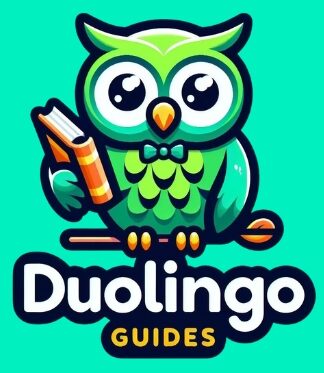Learning a new language can be a daunting task, but with the right tools and resources, it can be an enjoyable and rewarding experience. One of the most popular language-learning platforms is Duolingo, which has gained a massive following worldwide due to its gamified approach and user-friendly interface. However, to fully utilize Duolingo’s features and track your progress, you need to log in to your account. In this comprehensive guide, we’ll cover everything you need to know about logging in to Duolingo, from creating an account to managing your settings and troubleshooting common issues.
The short answer is: Logging in to Duolingo involves signing up with an email address or through social media accounts, then entering your credentials (email/username and password) whenever you access the Duolingo app or website. This guide explores logging in, managing your account, security, and extra features.
Creating a Duolingo Account
Before you can log in to Duolingo, you’ll need to create an account. The process is straightforward and can be done in a few simple steps:
- Visit the Duolingo website (www.duolingo.com) or download the Duolingo app on your mobile device.
- Click on the “Get Started” or “Sign Up” button.
- Choose whether you want to sign up with your email address or through a social media account (e.g., Google, or Facebook).
- If signing up with email, enter your email address and create a strong password.
- For users under the age of 13 (or the age of digital consent in your country), you’ll need to provide a parent’s email address and follow additional steps for parental consent.
- Agree to Duolingo’s terms of service and privacy policy.
- Verify your email address (if signing up with email) by clicking the confirmation link sent to your inbox.
Once your account is created, you can log in and start learning your desired language(s) right away.
Logging in to Your Duolingo Account
After creating your account, logging in to Duolingo is a simple process, whether you’re accessing it through the website or the mobile app:
Website Login:
- Go to www.duolingo.com and click on the “Log In” button in the top-right corner.
- Enter your email address or username and password.
- Click “Log In” to access your Duolingo account.
Mobile App Login:
- Open the Duolingo app on your mobile device.
- Tap on the “Log In” button.
- Enter your email address or username and password.
- Tap “Log In” to access your Duolingo account.
Sign in with your social media account (Google, Facebook) and allow Duolingo to access it.
Troubleshooting Login Issues:
If you’re having trouble logging in, try the following troubleshooting steps:
- Make sure you’re entering the correct email address or username and password. Double-check for any typos or capitalization errors.
- If you’ve forgotten your password, click on the “Forgot Password” link and follow the instructions to reset it.
- Clear your browser cache and cookies, then try logging in again.
- If you’re still having issues, reach out to Duolingo’s support team for further assistance.
Managing Your Duolingo Account Settings
Once logged in, Duolingo offers a range of account settings and customization options to enhance your learning experience. Here are some key features you can access:
Profile Settings:
- Update your profile picture and basic information.
- Set your learning goals and daily reminders.
- Manage your privacy settings (e.g., make your profile public or private).
- Change your notification preferences.
Learning Settings:
- Select the languages you want to learn and their difficulty levels.
- Adjust the lesson settings (e.g., enable or disable speaking exercises, adjust lesson speed).
- Customize your learning experience by enabling or disabling specific features (e.g., gamification elements, leaderboards).
Subscription Options:
- Upgrade to Duolingo Plus or a Family Plan to access additional features like offline lessons, an ad-free experience, and personalized coaching.
Parental Controls (for child accounts):
- Manage your child’s account settings and privacy preferences.
- Enable or disable social features and leaderboards.
- Monitor your child’s progress and learning activities.
Regularly reviewing and adjusting your account settings can help you tailor Duolingo to your specific learning needs and preferences, ensuring an optimal language learning experience.
Duolingo Login Features and Benefits
Logging in to Duolingo unlocks a wealth of features and benefits that can enhance your language learning journey:
Personalized Learning Experience:
By logging in, Duolingo can track your progress, identify your strengths and weaknesses, and adapt the lessons accordingly. This personalized approach ensures you focus on the areas where you need the most improvement, maximizing the effectiveness of your learning.
Progress Tracking and Achievements:
Duolingo keeps a detailed record of your language learning progress, including the lessons you’ve completed, your streak (consecutive days of practice), and the achievements you’ve earned. This visual representation of your accomplishments can be a powerful motivator to keep you engaged and committed to your language goals.
Social Features and Leaderboards:
When logged in, you can connect with friends who are also learning languages on Duolingo. You can follow their progress, compete on leaderboards, and encourage each other along the way. These social elements add an extra layer of motivation and friendly competition to your language learning experience.
Access to Additional Features:
Certain features, such as Duolingo Plus (ad-free experience, offline lessons, and personalized coaching), language clubs, and language certifications, are only available to logged-in users or require a subscription.
By logging in to your Duolingo account, you unlock a range of powerful features that can enhance your language learning journey, making it more enjoyable, personalized, and effective.
Duolingo Login Security and Privacy
Duolingo takes the security and privacy of its users’ data seriously. Here are some of the measures in place to protect your account and personal information:
Privacy Policy and Data Protection:
Duolingo’s privacy policy outlines how it collects, uses, and shares user data. They comply with various data protection frameworks, such as the EU-U.S. Data Privacy Framework and the UK Extension to the EU-U.S. Data Privacy Framework, ensuring that your data is handled responsibly and securely.
Two-Factor Authentication (2FA):
Duolingo offers an optional two-factor authentication feature, which adds an extra layer of security to your account. When enabled, you’ll need to enter a one-time code (sent to your phone or generated by an authenticator app) in addition to your password when logging in from a new device or browser.
Account Recovery Options:
If you ever lose access to your account, Duolingo provides account recovery options to help you regain control. You can reset your password through email or, in some cases, recover your account by verifying your identity with customer support.
Parental Consent and Child Account Restrictions:
For child accounts (users under the age of 13 or the age of digital consent in their country), Duolingo requires parental consent and imposes additional restrictions to protect the privacy and safety of minors. These include limiting personal information collection, disabling certain features, and providing parental controls.
By prioritizing security and privacy, Duolingo aims to create a safe and trustworthy environment for language learners of all ages.
Frequently Asked Questions about Duolingo Login
Here are answers to some common questions related to logging in to Duolingo:
Can I have multiple Duolingo accounts?
Yes, you can create multiple Duolingo accounts, but you’ll need to use a different email address or social media account for each one. However, it’s generally recommended to stick with a single account to keep your progress and achievements consolidated.
How do I change my Duolingo password?
To change your Duolingo password, log in to your account, go to the “Settings” section, and look for the “Change Password” option. Follow the prompts to enter your current password and set a new one.
Can I merge multiple Duolingo accounts?
Unfortunately, Duolingo does not currently offer a way to merge multiple accounts. If you have progress or achievements spread across different accounts, you’ll need to decide which account you want to continue using and discard the others.
How do I delete my Duolingo account?
If you wish to delete your Duolingo account, log in to your account, go to the “Settings” section, and look for the “Delete Account” or “Deactivate Account” option. Follow the prompts to confirm your decision, and your account will be permanently deleted or deactivated.
Can I access Duolingo without an account?
While you can use some basic features of Duolingo without an account, creating an account and logging in is highly recommended to unlock the full potential of the platform. Without an account, you won’t be able to track your progress, earn achievements, or access many of the advanced features that make Duolingo an effective language learning tool.
Conclusion
Logging into Duolingo is a straightforward process that unlocks a world of language learning opportunities. By creating an account and logging in regularly, you gain access to personalized lessons, progress tracking, social features, and additional tools to enhance your language acquisition journey.
Whether you’re a beginner or an experienced language learner, taking the time to understand the login process and account management features can significantly improve your Duolingo experience. With the ability to tailor the platform to your preferences, connect with fellow learners, and monitor your achievements, you’ll find yourself more motivated and engaged in your language learning efforts.
Duolingo protects your personal information with strong security measures and parental controls, so you can focus on learning without worrying.
So, what are you waiting for? Log in to your Duolingo account (or create one if you haven’t already) and embark on an exciting language-learning adventure today!







